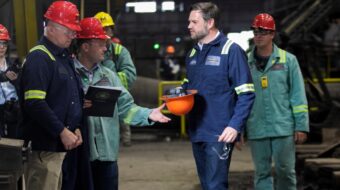
When it comes to wages, health insurance and workplace retirement plans Asian Americans and Pacific Islanders (AAPIs) enjoy major benefit advantages if they belong to unions, according to a new report.
The study, “Unions and Upward Mobility for Asian and Pacific Islander Workers” was released by the Center for Economic and Policy Research this week.
It notes AAPIs are, with Latinos, the fastest growing ethnic group in the U.S. workforce. In 2009 AAPIs were one of every twenty U.S. workers, up from one-in-forty only 20 years earlier. They are also the fastest growing ethnic group in organized labor, accounting for just under one-in-twenty unionized workers in 2009.
After controlling characteristics such as age, education level, industry, and state, unionized AAPI workers earn about 14.3 percent more than non-unionized AAPI workers with similar characteristics. This translates to about $2.50 per hour more for unionized AAPI workers.
Unionized AAPI workers are also about 16 percent more likely to have health insurance and about 22 percent more likely to have a retirement plan than their non-union counterparts.
Union benefits are also greatest for AAPI workers in the 15 lowest-paying occupations. Low-wage workers earn about 20.1 percent more than non-union AAPI workers in low-paying occupations. Those in unions are also about 23.2 percent more likely to have employer-provided health insurance and 26.3 percent more likely to have a retirement plan through their job.
In conclusion authors of the report say AAPI workers who are able to bargain collectively earn more and are more likely to have benefits associated with good jobs. They add the data strongly suggest that better protection of workers’ right to unionize would have a substantial positive impact on the pay and benefits of AAPI workers.
Gregory Cendana, executive director of the Washington D.C.-based Asian Pacific American Labor Alliance says the report “validates the work we do and shows why unions are extremely important and a vital part of the economic security for Asian and Pacific Americans.”
Cendana notes it’s important to share the findings in the report and inform people about their rights when it comes to joining unions. He said his group has been holding local workers’ rights hearings in the D.C. area within the Asian Pacific American community. Similar forums are also being planned in different cities and towns nationwide, he said.
“The hearings are an opportunity for Asian and Pacific American workers to share struggles and engage community members in order to strengthen labor-community partnerships for a broader economic justice agenda,” he said.
Cendana adds his group plans to continue working with the AFL-CIO and Change To Win federations and other labor groups to advocate on behalf of all workers to join and support unions.
“While unions benefit Asian Pacific American workers, it is far too hard for them to join unions due to our outdated labor laws,” said Cendana. “We have to think pro-actively and creatively about addressing those.”
Building stronger labor-community alliances and student-labor partnerships is something Cendana says his group is also committed to. “At the same time it’s also critical to strengthen the labor movement’s ties to the broader civil rights movement,” he said.
For example the labor movement played an important role in helping students lobby for the Student Aid and Fiscal Responsibility Act, which Congress eventually passed and President Obama signed into law, he says.
Photo courtesy of the Asian Pacific American Labor Alliance (AFL-CIO).










